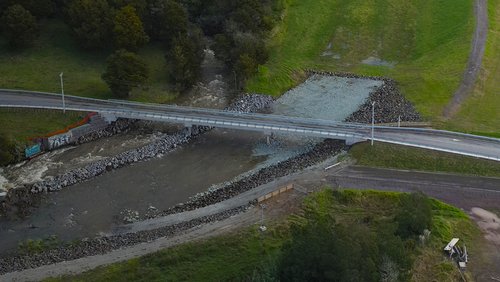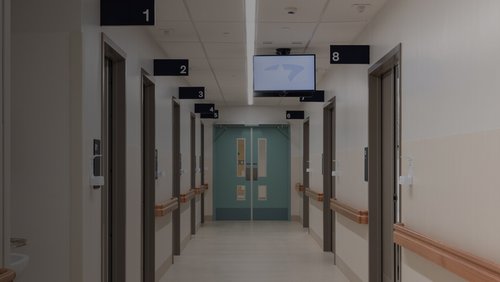30 Oct 2024
As overall population growth slows, the most formidable demographic challenge facing the world is ageing. New Zealand is likely to have 1.2 million people aged 65 and over by 2034. This means many health, social and economic challenges, all requiring adaptations to the way society is structured. Engineers are working on a range of innovations to make Aotearoa more age inclusive.
The World Health Organisation (WHO) says more than 55 million people worldwide are living with dementia, with 10 million new cases every year. Dementia is not a normal part of ageing, but age is the strongest known risk. Despite its prevalence, WHO states there remains a lack of awareness and understanding of dementia, resulting in stigmatisation, and barriers to diagnosis and care.
But there is a different way, says Invercargill-based Frank O’Boyle CMEngNZ CPEng.
Originally from Ireland, Frank is South Port New Zealand’s Infrastructure and Environmental Manager. He is also the Chair of the Hawthorndale Care Village, a not-for-profit organisation building a “dementia village” which is set to open in Invercargill in May 2025.
Hawthorndale is based on the groundbreaking Hogeweyk Dementia Village which opened in Amsterdam in 2009. There, the primarily government-funded community resembles a typical Dutch town with a shop, restaurant, theatre and pub, and 27 houses. The 188 residents all suffer from severe dementia, yet they move about the village freely and interact with fellow patients and plainclothes care staff.
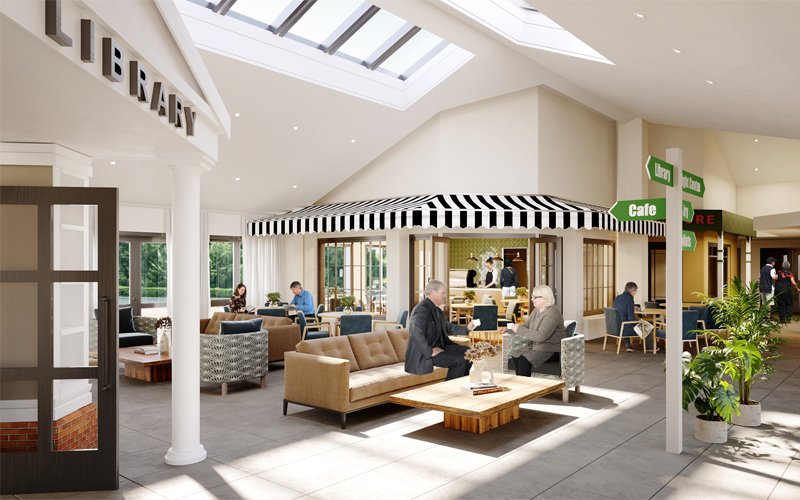
Artist's render of Hawthorndale's village centre. Image: Foley Group
Back in Southland, construction of the $39m project started in October 2022 after a decade of planning and years of fundraising. On completion, it will house 86 residents, including 74 transferring from another aged care facility that is closing.
Instead of a segregated wing for dementia patients, Hawthorndale’s residents will live in 13 houses, each with six or seven bedrooms and a shared living space. Caregivers will be on hand to monitor and help with showers and cook meals, although residents will be encouraged to participate in everyday household chores.
Our aim is to allow residents to live as normal a life as possible in a safe and secure village.
For Hawthorndale, having a “town centre” was a non-negotiable to replicate everyday living, says Frank. Amenities will include a theatre, hairdresser, library, gym, cafe, dairy, chapel, travel agent and a workshop.“Our aim is to allow residents to live as normal a life as possible in a safe and secure village.”
Residents are not locked in their rooms at night and there are no security cameras in bedrooms or bathrooms. Instead, hi-tech wristbands connected to security sensors will track residents, for example alerting staff if a resident gets out of bed.
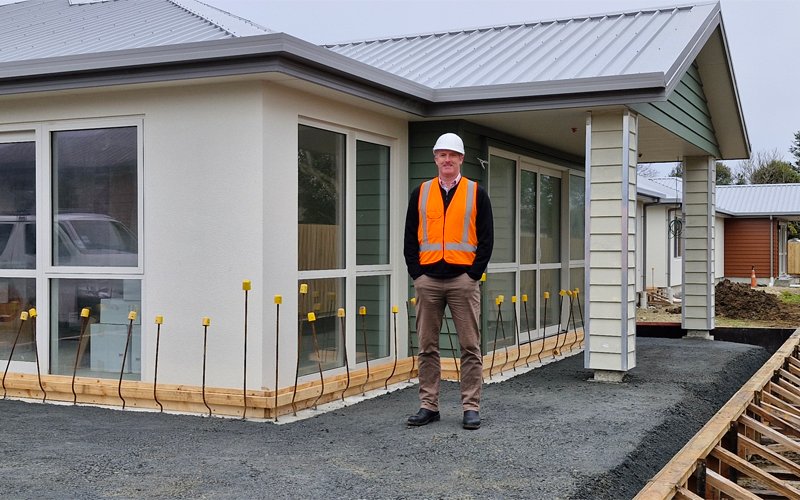
Frank O'Boyle on site during construction. Photo: Anu Kiwulegedara
The “main street” will be enclosed in an all-weather atrium, but each business will be distinctive. Other design features such as landscaping and colour schemes for each home will also help residents find their way around.
Like the former school whose site it’s built on, Hawthorndale will be part of the community. The cafe and playground will be open to the public. Frank describes the community support as “phenomenal” with more than $10m raised towards the project.
Frank, who has family members who have suffered from dementia, says learning about the Hogeweyk model was a “lightbulb moment”.
“It aligned nicely with the decision to move to a new site and invest in a new model of care. As an engineer, it is exciting and hugely satisfying to be involved with such a groundbreaking project.”
Kiwis who care
WorkSafe says healthcare workers who move and handle patients have one of the highest rates of musculoskeletal disorders among all occupational groups. HT Systems, a Christchurch start-up run by two engineers, aims to solve this with the Kera sit2sit. It’s an innovative way of transferring someone with limited or no mobility from chair to chair – such as wheelchair, armchair or toilet – a major proportion of the transfers of elderly or disabled people in homes or hospitals.
The University of Canterbury Mechanical Engineering Department’s Professor Emeritus Keith Alexander FEngNZ is perhaps better known as the inventor of the Springfree Trampoline, and for his work on jet boats, jetpacks and an amphibious car. But he realised there was a growing need for a low-force transfer device for elderly people and their caregivers.
The essential idea is a pivot system based on the natural motion people use to get out of a chair.
“The transfer aid has no electronics, requires minimal physical effort and, crucially, can be operated by one person,” Keith says.
Several patents have been taken out for the Kera sit2sit, with “Kera” a play on the Kiwi pronunciation of “carer”.
Mechanical engineer Alex O’Keefe, whose sister has spina bifida and uses a wheelchair, played a key role in rethinking and refining the design for market.
Keith says the Kera sit2sit may look simple, but it’s not.
“A lot of transfer devices out there are not very well thought-out, but look as if they will work. But there’s a lot of subtlety in working with people, and matching the engineering with their needs is really unique.
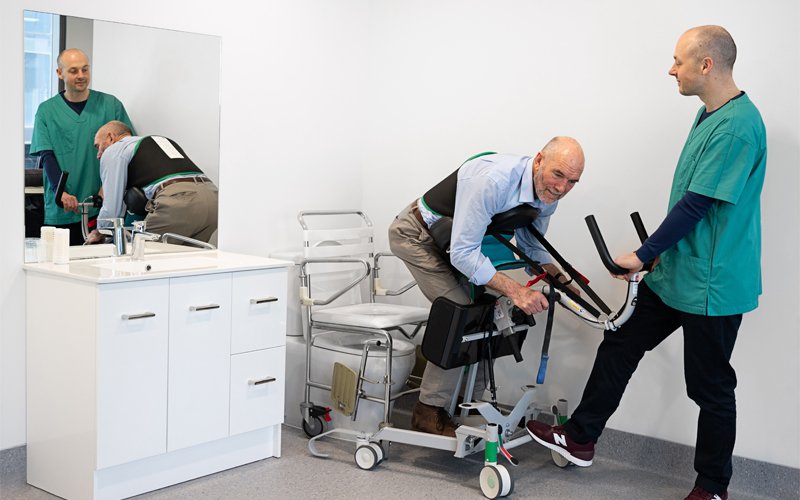
The Kera sit2sit transfer aid can be operated by just one carer and allows easy access for personal hygiene functions. Photo: Alex O'Keefe
“I found it quite challenging to engineer around people’s bodies. They don’t fold up the way you might expect and sometimes the hinges are frozen. People are soft and spongy and you can’t kind of measure things very accurately. Getting good data is hard.”
Keith says: “Ten protoypes later we got to the point where you could lift somebody of 70 kilograms comfortably, gently and safely, with just two fingers.”
An advantage of the Kera sit2sit is that it only needs one caregiver to move a person.
The Kera sit2sit won Best New Product of the Year at the Assistive Technologies Suppliers Australia (ATSA) expo in Perth in 2023 and was nominated as a finalist in the 2024 NZ Hi-Tech awards.
HT Systems is also developing a novel holding and raising system to help people to stand, regardless of weight-bearing ability.
Automation helping older workers stay on longer
Engineering, in particular, automation and artificial intelligence (AI), can help support senior workers.
University of Auckland Professor of Smart Manufacturing Dr Xun Xu FEngNZ runs the Laboratory for Industry 4.0 Smart Manufacturing Systems (LISMS). The lab is a partner of the European Union’s (EU’s) Research and Innovation Staff Exchange programme Models and Methods for an Active Ageing Workforce, looking at the needs of the ageing workforce in manufacturing and seeking solutions. In Auckland, that work is being led by Dr Yuqian Lu, with students from the University of Auckland and those in the team from the EU, investigating the fatigue level and ergonomic postural risk in manufacturing and seeking solutions via empathetic human-robot collaborations.
Xun says automation can help support older workers physically and mentally.
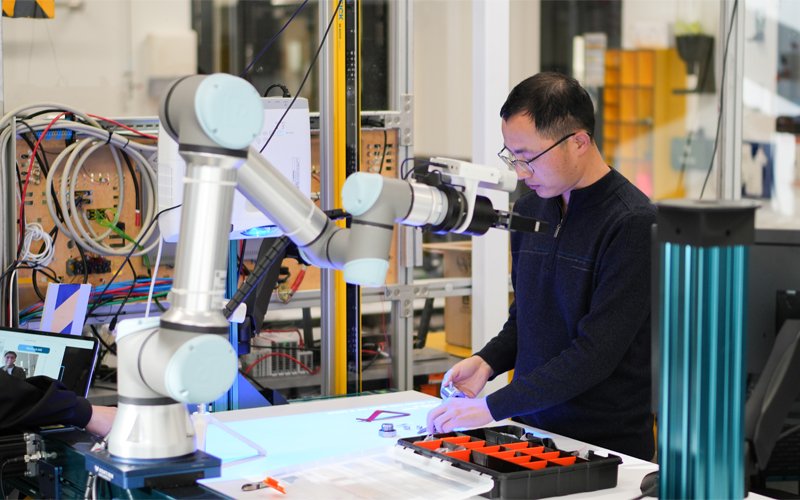
Dr Yuqian Lu is researching how automation tools can assist older people in the workforce. Photo: William Chea
“They may not be able to do the work they have been doing because of their physical capabilities, but their knowledge, expertise and experiences are still very important and bring value to businesses.”
Automation tools can assist senior workers, in a factory for example, by taking on the heavy lifting. Xun says advances in technologies such as those of teleoperation enable the operation of a machine, system or robot from a distance. For example, Xun says, in the forestry sector, an operator could work from a virtual environment with live video and audio feedback from a tree-felling machine.
Xun says certain sectors, such as manufacturing, are experiencing “perception issues” – not enough young people are attracted to the profession, hence there is a need to prolong the working life of the existing workforce. Equally important is capturing their knowledge and expertise before they exit the workforce. Typically, the senior workers are happy to share their expertise, he says.
At LISMS, Yuqian has developed advanced machine learning tools to analyse videos of factory workers involved in human-robot collaborative assembly. Domain-specific knowledge can be captured and coherent assembly action sequences can be generated for assisting workers and training new employees – and even for training robots to be more skilled at working with humans.
Xun predicts factories will increasingly become a “society” where machines and human coexist in harmony. “This society will have more and more senior members and, for it to remain resilient, their wellbeing has become a new focus of the employers and researchers.”
Designing age-friendly cities
The ageing world population will be one of the defining “mega-trends” of this century, notes Arup’s 2019 report Cities Alive: Designing for ageing communities. This shift in demographics, it says, will be most keenly felt in our cities, with enormous implications for public services, infrastructure and housing. Arup Principal and New Zealand leader Mayurie Gunatilaka says it’s crucial to prepare. Cities should be inclusive to all by supporting everyone’s diverse needs, she says.
“However, age is a really important lens to think about inclusive designs.”
With issues for older people including social isolation, accessing support and affordability, Mayurie says age-friendly cities offer people an enhanced sense of belonging.
“They address how the environment supports social interaction and they promote a healthy and active lifestyle and support physical and mental wellbeing with well-designed spaces that help mobility and accesibility, while feeling safe.”

Views of the landscaped terraces and community park at Singapore's Kampung Admiralty development help residents feel connected to nature and their community. Image: Patrick Bingham-Hall
Mayurie says Singapore’s Kampung Admiralty Mixed-Use Development is a great example of a residential development for older people. Built in 2018, it aims to support residents’ health and community involvement. It boasts a medical centre, fitness centre, a bank, supermarket and other shops, and green spaces.
An “inter-generational approach” to planning, designing, funding and delivering infrastructure is critical, Mayurie says. This involves thinking holistically and looking beyond an asset, such as roading, to consider the opportunity to adapt, enhance and imagine how it might service people and the environment in the future.
Denmark’s population and economy are of similar size to New Zealand's. The Danish capital Copenhagen is an “inspiring” example of an age-friendly city built with innovating funding models and inter-generational thinking behind its infrastructure.
Te Ao Māori has that mindset, too, but Aotearoa as a whole would gain from this approach, says Mayurie. Connected, affordable and accessible, age-friendly cities “will not only benefit older people, but they will give everyone in New Zealand a better living experience.”
In New Zealand, Arup is working with Sports New Zealand on its Neighbourhood Play System. The project looks at urban play spaces with tamariki as its focus. “But it is grounded in the sentiment that play is a lifelong thing that should be accessible to all ages. Plus there are many similarities between designing spaces that work for children and older people.”
Earlier this year Arup conducted its second national survey with advocacy group Women in Urbanism looking at women’s commuting experiences, which garnered 800 responses, including many wāhine over the age of 60. Many of the barriers identified in the study relate to our older population , says Mayurie. “Taking steps to begin addressing these challenges will have a large contribution to how older people get improved accessibility and safety outcomes.”
This article was first published in the September 2024 issue of EG magazine.

